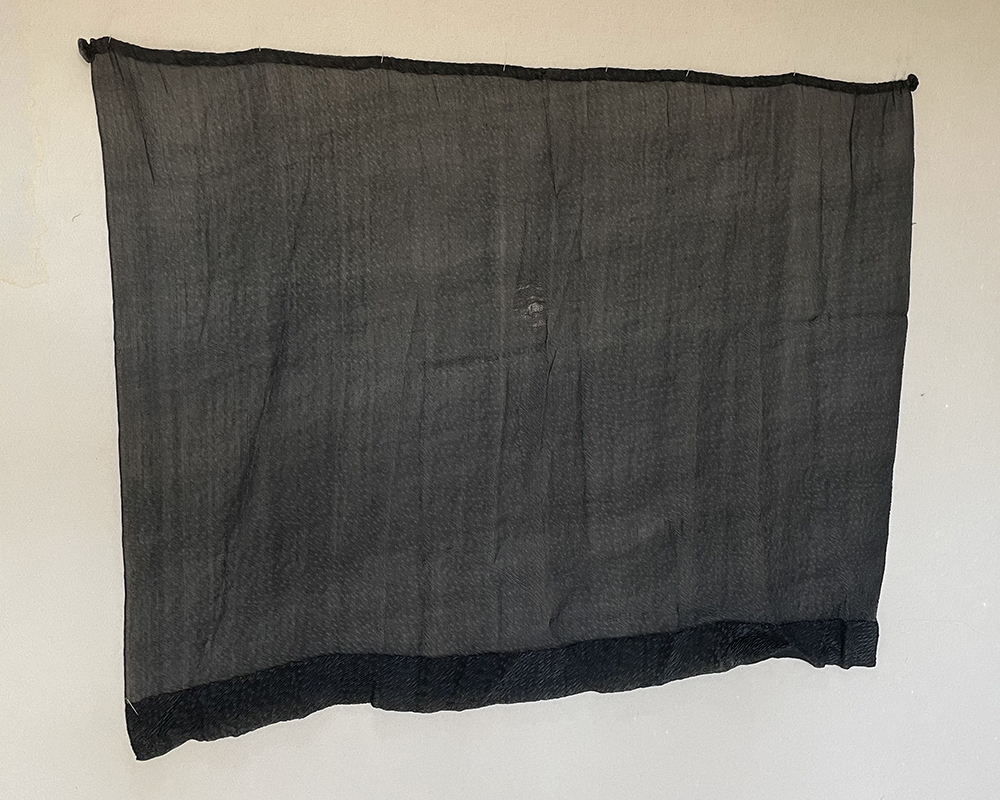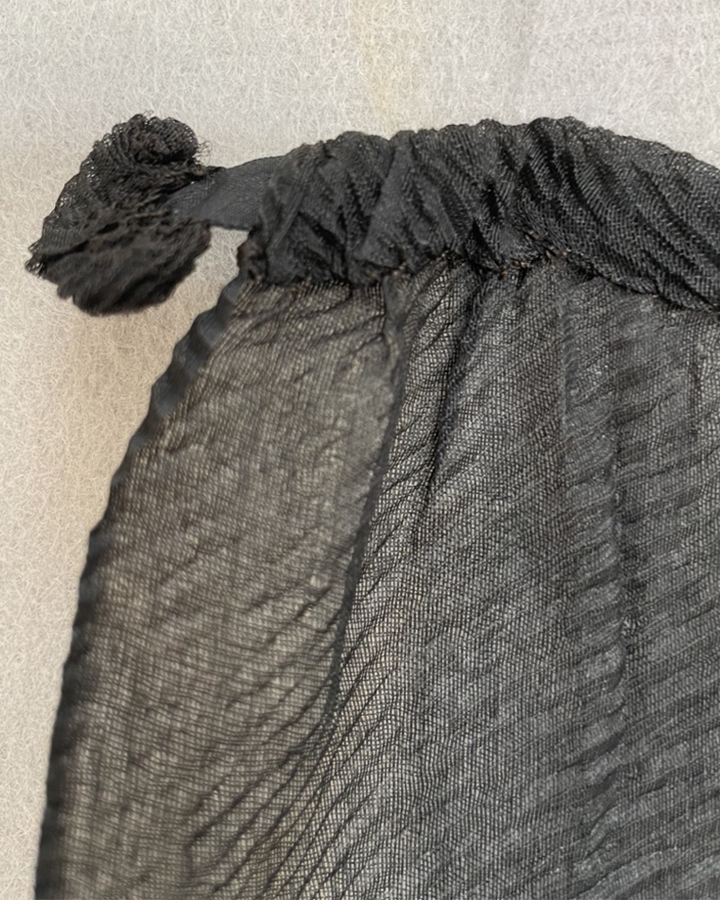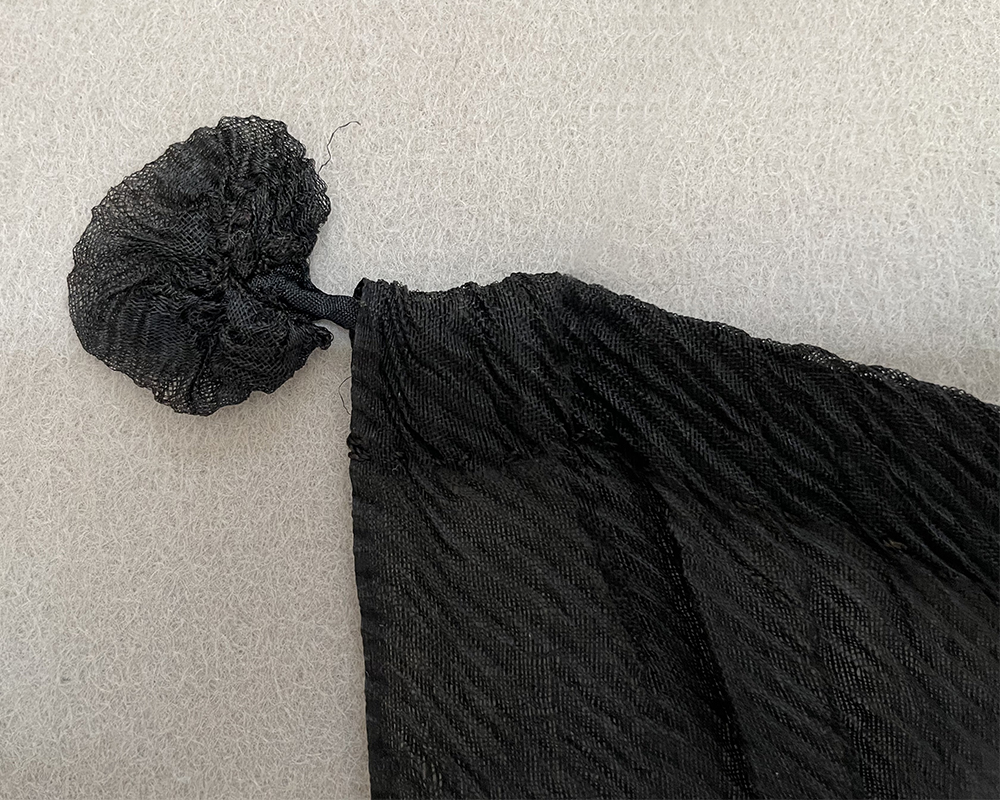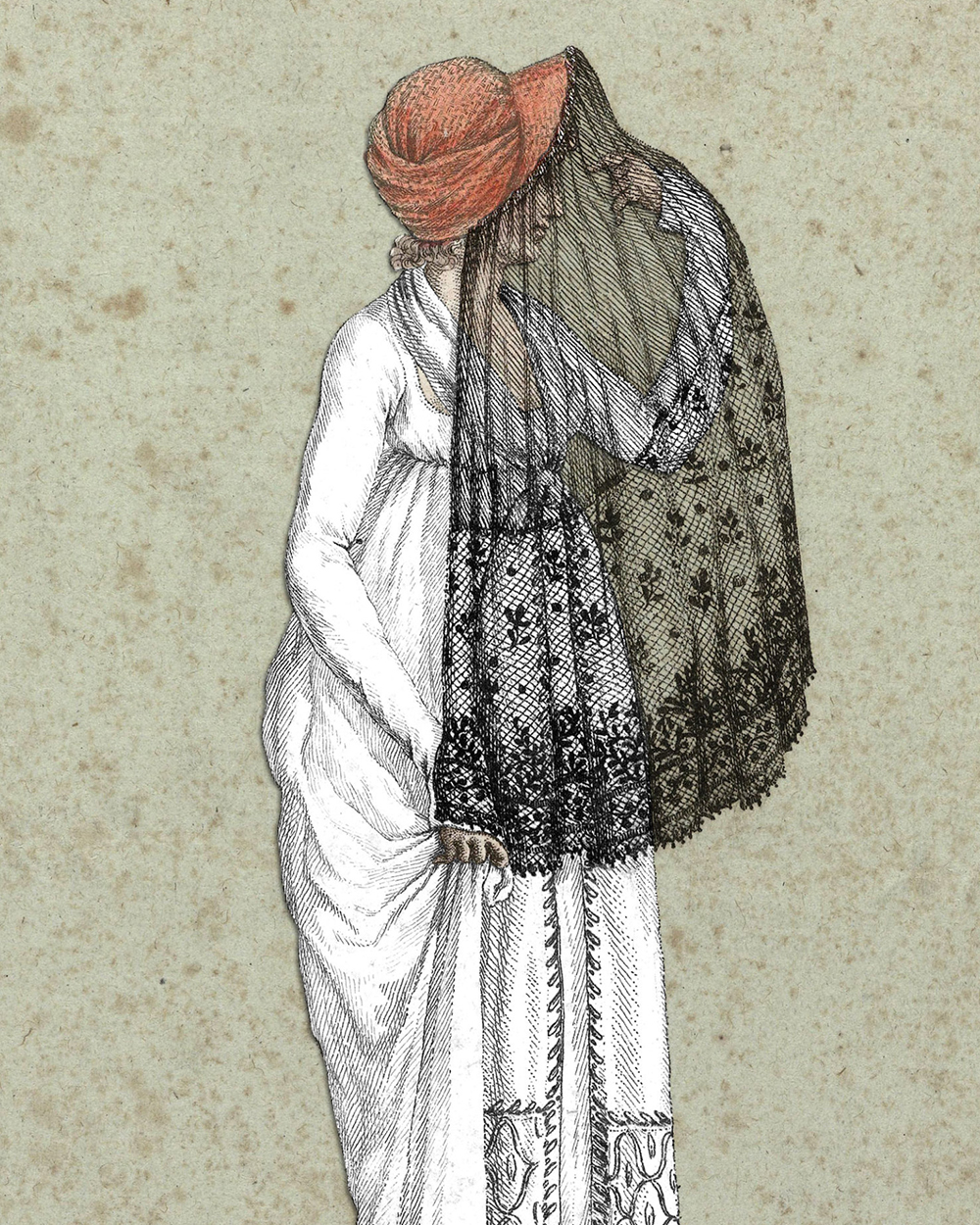




I have only had about four crape mourning veils and it always amazes me that these were kept, because they are fairly plain and unexciting. Millions would have been made during the Victorian period, when one often went into mourning for two years.
Lou Taylor has very generously given me the following information: probably manufactured by Courtaulds at their Bocking, Braintree or Halstead factories in Essex* In Lou's book she shows a crimped, spotted cape exactly like our veil, dated to 1890-1900 by Prof D.C. Coleman. By then mourning crape was going out of fashion , (replaced by black georgette.) Courtauld’s tried to keep the demand alive by introducing waterproof crape and also ‘spotted’ crape- which I think this one is. I love the pompom on the corner...added by the mourning milliner maybe- a touch of fashionability...
The veil would have been attached to the back of the hat to hang down the wearer's back. When required to cover the face it would have been flipped over.
Crimped silk crape, the narrow turned top with a drawstring ribbon of same fabric, the bottom with a deeper turned hem.
33 1/2 x 43 in; 85 x 1.10 m
There is an area of wear to the centre 2 1/2 x 1 3/4 in; 6 x 5 cm
* Norwich and the Mourning Trade by Ursula Priestley. Article in Costume no 27 - 1993.
**Mourning Dress by Lou Taylor. Plate 113.
There are examples in the Bridewell Museum, Norwich.
Price: £125 | $160 | €140
Ref N°: 1139
All images and text © meg-andrews.com 2021